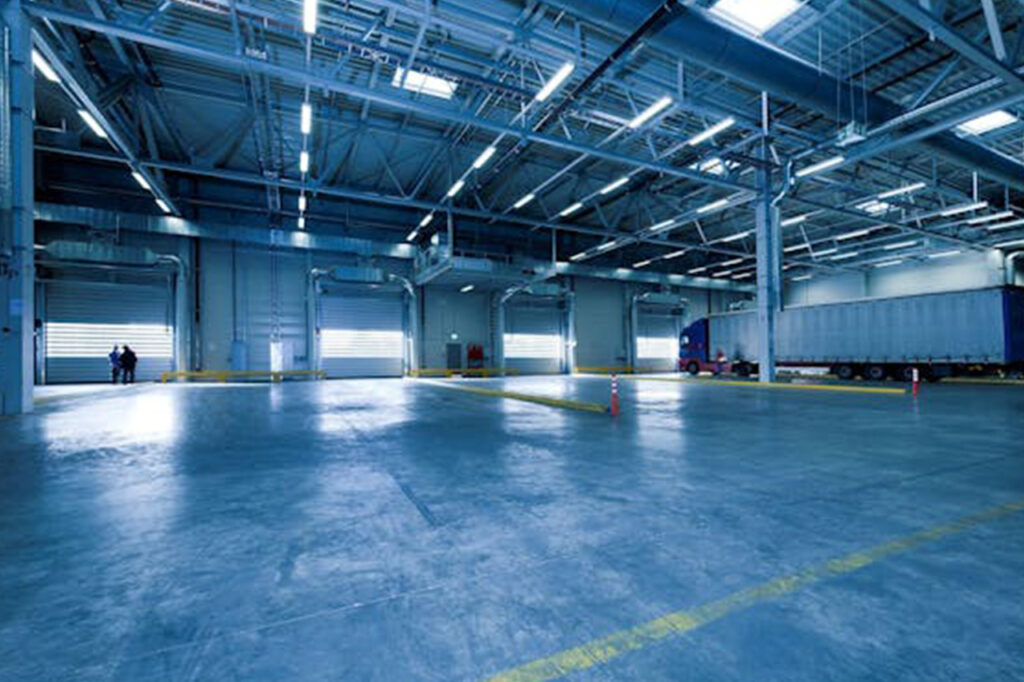If you are constructing a metal shop, chances are you may choose between a clear-span building or a multi-span building.
Clear-span buildings have wide open spaces with no columns that act as support inside.
On the other hand, multi span buildings are structural systems that incorporate more than one span between support columns. These buildings are designed with multiple frames or trusses which allow for extended coverage across wide areas without compromising stability or performance.
In this article, the folks at Lion Buildings will talk about multi-span buildings.
Multi span designs are commonly used in industrial settings, agricultural facilities, commercial buildings, and large-scale warehouses. Understanding how these buildings are configured helps in selecting the appropriate layout for functionality, budget, and aesthetics.
Unlike single span structures that have one uninterrupted area supported by two ends, multi span buildings are broken up by intermediate columns or supports. These supports help distribute loads more efficiently, making them ideal for larger structures. This configuration is particularly useful for applications that require clear divisions of space or varying load distributions across a wide footprint.
Basic Characteristics of Multi Span Buildings
The primary feature of a multi span building is the presence of two or more structural spans within one roofline. These spans are usually supported by rows of interior columns, beams, or trusses. This method of construction allows for greater design flexibility, more expansive layouts, and better structural integrity over long distances.
Multi span buildings can be either symmetrical or asymmetrical. Symmetrical designs provide uniformity across the structure while asymmetrical configurations allow for varying roof heights and column spacing based on specific use cases. These buildings can also incorporate different roofing styles such as gable roofs or arched roofs depending on the desired architectural appearance and practical requirements.
Benefits of Multi Span Buildings
One of the most significant advantages of multi span buildings is their ability to cover large areas cost-effectively. The use of interior supports reduces the need for large or custom-engineered trusses. This makes the construction process more efficient and potentially less expensive than creating one massive clear span structure.
These buildings also offer increased flexibility for interior layouts. The presence of columns can help organize storage, workstations, or machinery within the space. Additionally, multi span structures allow for phased expansion. Business owners can add additional spans to one side as their needs grow without completely overhauling the entire building.
Another benefit is the structural integrity that comes from evenly distributed loads. Multi span buildings handle snow, wind, and seismic forces with greater stability. Interior supports provide reinforcement, which can increase the building’s resilience against environmental stressors and structural fatigue over time.
Applications of Multi Span Buildings
Multi span buildings are used in a variety of sectors due to their versatility. In agriculture, they are ideal for barns, livestock shelters, and crop storage. These buildings can house multiple functional zones under one roof, from feeding areas to equipment storage. In industrial settings, multi span designs are suitable for manufacturing plants, loading docks, and assembly lines where different processes are segmented across the building.
Retail complexes and exhibition halls also benefit from the large coverage provided by multi span systems. The segmented interior space allows for multiple vendors or displays while maintaining structural efficiency. Schools and gyms may use this type of building for auditoriums, sports courts, or event halls. Their adaptability and scalability make them a practical choice in many construction scenarios.
Structural Components and Materials
The construction of a multi span building typically involves steel frames, pre-engineered metal panels, and reinforced concrete foundations. Steel is a popular choice due to its strength, lightweight nature, and resistance to corrosion. These frames support roof trusses or rafters that extend between columns. Depending on the size and use of the building, additional reinforcements such as braces or struts may be added for increased stability.
Roofing and cladding options vary based on climate, budget, and aesthetic preference. Insulated panels are often used in climate-controlled buildings to maintain internal temperatures. Skylights or translucent panels may also be installed to improve natural lighting inside the structure. Doors, windows, and ventilation systems are integrated into the design to ensure proper airflow and accessibility.
Planning and Design Considerations
Planning a multi span building requires a detailed analysis of intended use, available space, and load requirements. Engineers must determine the number and placement of interior columns to balance support with functionality. The type of foundation, soil conditions, and local building codes also play critical roles in the planning process.
Designers must also consider internal logistics. For instance, placement of support columns should not interfere with large equipment movement or workflow efficiency. Access points, emergency exits, and utilities like plumbing or electrical wiring must be factored into the layout. Safety regulations, insulation needs, and weather resistance should be addressed early in the design phase to avoid costly modifications later.
Challenges in Multi Span Construction
While multi span buildings offer numerous benefits, they also come with challenges. The presence of interior columns can sometimes limit flexibility in open floor plans. In some use cases, these columns may interfere with large-scale machinery or traffic flow. Careful planning is needed to place them where they will not disrupt operations.
Construction timelines may also be extended due to the added complexity of multiple spans and supports. Coordinating the installation of interior frames with exterior walls and roofing can require more labor and oversight. Additionally, uneven settlement or structural movement can be more pronounced if the foundation is not properly designed to accommodate multiple load points.
Maintenance and Longevity
Multi span buildings are known for their durability, especially when constructed using high-quality steel and treated materials. Regular maintenance ensures longevity and safety. This includes inspecting joints, columns, and roof trusses for signs of wear, corrosion, or structural fatigue.
Routine cleaning of gutters, checking for leaks, and servicing mechanical components like ventilation systems contribute to the overall performance of the building. Repainting exposed metal surfaces and sealing joints help prevent moisture penetration. Scheduled maintenance programs can prevent minor issues from escalating into costly repairs.
Cost Considerations
The cost of constructing a multi span building depends on factors such as size, materials, labor, and complexity of the design. Although the presence of interior columns can reduce material costs compared to large clear span structures, the increased labor and planning may balance out the savings.
Prefabricated components can help manage costs by reducing construction time and ensuring quality control. Modular elements also make future expansions or renovations more manageable. Evaluating total life cycle costs, including maintenance and energy use, gives a clearer picture of the long-term investment value.
Environmental and Energy Efficiency
Modern multi span buildings often incorporate green building practices and energy-efficient technologies. Insulated panels, solar reflective roofing, and advanced ventilation systems can reduce energy consumption. Sustainable materials and efficient construction methods help reduce the environmental impact of the building.
Many multi span structures are designed to accommodate solar panels or rainwater harvesting systems. These features not only contribute to sustainability goals but also provide cost savings over time. Efficient insulation and natural lighting improve interior comfort and reduce dependence on artificial systems.
Future Trends in Multi Span Design
As building technologies evolve, multi span structures are expected to become more versatile and efficient. Innovations in materials, automation, and digital modeling allow for more precise engineering and faster construction. Customization options will expand, allowing building owners to tailor designs more closely to their operational needs.
Architectural aesthetics will also play a larger role. Designers are finding creative ways to integrate multi span buildings into urban and residential settings without sacrificing function. The rise of modular construction and 3D printing may further reduce costs and improve scalability.
Conclusion
Multi span buildings provide an effective and versatile solution for covering large areas with reliable structural integrity. Their design allows for efficient space utilization, scalability, and adaptability across a wide range of applications. From agriculture to industry to commercial spaces, multi span construction continues to be a valuable option for those seeking performance and practicality.
Understanding the principles and benefits of multi span buildings empowers decision makers to make informed choices that align with their operational goals and budgets. With proper planning, quality materials, and regular maintenance, these buildings can deliver long-term value and functionality for decades to come.

